Start » Rust in the pistachio tree: Pileolaria terebinthi C. and its impact
Rust in the pistachio tree: Pileolaria terebinthi C. and its impact
Table of Contents
Estimated reading time: 11 minutes
What is Rust in the pistachio tree?
Rust in the pistachio tree It is a disease caused by the fungus Pileolaria terebinthi C. This sickness mainly affects the leaves of pistachio trees, causing significant damage to crops. It is characterized by the appearance of reddish-brown or violet spots on the leaves, surrounded by a yellowish margin. These spots become crusty when the reproductive structures of the fungus mature and form teliospores., which results in large necrosis in the leaves and their premature fall.
Characteristics and causes of the disease
Rust in the pistachio tree develops mainly in conditions of high humidity and temperate temperatures. The fungus Pileolaria terebinthi C. spreads in the crop through the spores present in the lesions of infected leaves, as well as by the action of wind and rain. Furthermore, the proliferation of this disease is favored by the lack of ventilation in the growing area and the presence of remains of infected leaves.
Impact on pistachio crops
The presence of Rust in pistachio crops can have a significant impact on the production and quality of the fruits. The spots caused by this disease reduce the photosynthetic capacity of the leaves and affect the normal development of the plant. Additionally, premature leaf fall can decrease the accumulation of reserves for the next flowering and fruiting cycle. Therefore, it is essential to carry out prevention and control measures to minimize the impact of Rust on pistachio crops.
Symptoms of rust in the pistachio tree
Rust (Pileolaria terebinthi C.) is a disease that affects the pistachio tree and is characterized by producing various symptoms on the leaves. These symptoms can vary in appearance and severity, but early detection is essential to take appropriate control measures and minimize crop damage.
Spots and changes on the leaves
One of the most obvious symptoms of Rust in the pistachio tree are the spots that appear on the leaves. These spots are usually reddish brown or purplish in color and are surrounded by a yellowish margin. Over time, these spots become crusty. as the reproductive structures mature and form teliospores, which are the resting spores of some fungi of the division Basidiomycota, from which emerges the basidium.
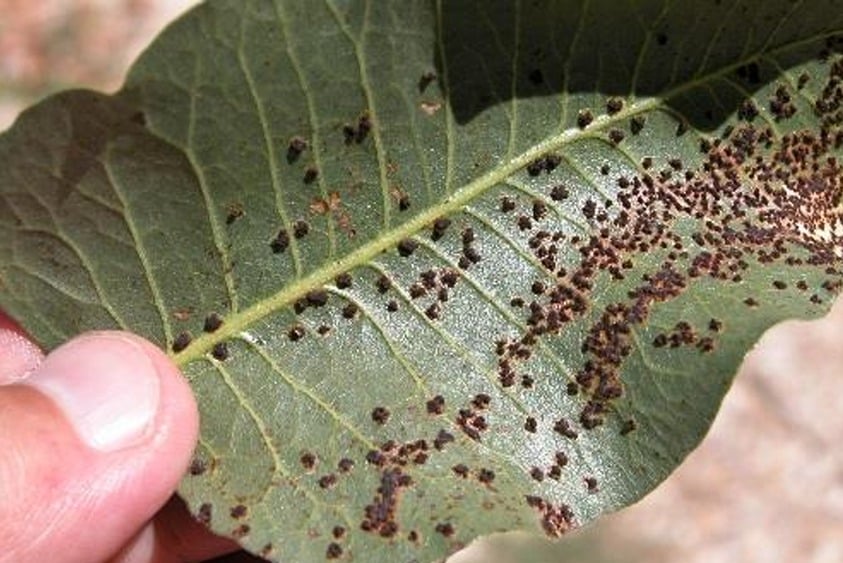
In addition to spots, affected leaves may also show other visible changes. It is possible to observe a change in the texture of the leaf, which becomes rough or corrugated. Likewise, the leaves may show deformations or curl towards the underside. These changes in the appearance of the leaves are clear indicators of the presence of Rust in the pistachio tree..
Necrosis and premature leaf fall
As the disease progresses, Rust spots can spread rapidly, causing leaf necrosis.. Necrosis is characterized by the death of plant tissue, which manifests itself in the appearance of dry, dark brown or black areas on the affected leaves.
Necrosis weakens the structure of the leaves and affects their photosynthetic function, leading to a decrease in nutrient production. As a result, Affected leaves weaken and fall prematurely, which can have a negative impact on the normal development of the pistachio tree and reduce its yield.
Prevention and control of rust in the pistachio tree
Preventive measures to avoid the disease
To prevent the spread of rust in pistachio crops, It is essential to implement appropriate preventive measures. Some of the important recommendations are:
- Maintain adequate cleaning and sanitation of the growing area, eliminating plant remains affected by the disease.
- Carry out adequate crop planning, avoiding planting pistachios in areas where there have been previous cases of Rust.
- Monitor and control soil moisture, avoiding conditions that encourage the proliferation of the disease.
- Promote good ventilation of the plantation through pistachio tree pruning work suitable.
- Promote the growth of rust-resistant varieties in the pistachio tree.
Recommended treatments and products
If the presence of rust is detected in the pistachio tree, it is important to have recommended treatments and products for its control. Some effective options are:
- Apply authorized and specific fungicides to control rust in pistachios, always following the instructions and recommended doses.
- Use quality products with guaranteed health registration, preferably of ecological origin or with low environmental impact.
- Make applications in a timely manner, following the manufacturers' instructions and adapting to the life cycle of the pathogen.
Ecological, cultural and chemical control methods
In addition to conventional treatments, there are ecological, cultural and chemical control methods that can help mitigate the spread of Rust in the pistachio tree. Some options are:
- Implement integrated pest and disease management techniques that contemplate the use of natural predators and beneficial organisms to control the Rust population.
- Use biological fungicides based on antagonistic microorganisms or plant extracts with antimicrobial properties.
- Carry out preventive treatments with copper-based products As the Copper oxychloride, following the appropriate recommendations and doses.
- Apply biostimulation techniques and strengthening the pistachio tree's immune system. to increase its natural resistance against Rust.
- Prune affected branches and bury or burn both the pruned branches and the affected leaves and mummified fruits.
Other common diseases and pests in the pistachio tree
Diseases related to spots
The presence of spots on the pistachio tree can indicate the presence of diseases such as verticillosis, the septoria wave botryosphere, which we have already talked about. These diseases, also of fungal origin, can cause damage to shoots, leaves and fruits, which negatively affects the yield and quality of the harvest.
Most frequent pests in pistachio crops
In addition to diseases, There are several pests that can affect the pistachio tree.. Some of the most common pests include:
- Coleoptera: Galeruca or Clytra (LabidostomislusitanicaG.)
- Hemiptera: Bedbugs; Green stink bug (NezaraviridulaL) and Psila (AgonoscenapistaciaeB. & L.)
- Lepidoptera: Meal moth (PlodiainterpunctellaH.), caterpillars (Order Lepidoptera, several families)
- Vesperus xatarti Duf. (Castañeta) The vine castañeta is a beetle whose larvae destroy the roots, seriously affecting the vine crop. This beetle can also infect the pistachio tree, especially between the months of October to December.
- Saissetia oleae Bern. (Cochineal) The olive cochineal, also known as soot cochineal or chaparreta, is one of the most relevant pests in the olive grove. But as a homopteran it also affects citrus and other fruit trees such as pistachio.
- Borer: The borer can cause galleries to appear on the branches and weaken the plant.
- Phyllobius Pomaceus (Nettle Weevil): This beetle can damage the leaves and fruits of the pistachio tree.
- Capnodis tenebrionis L. (Big-headed worm): This insect is a characteristic pest of the almond tree, which can also infect the pistachio tree, causing damage to the shoots, leaves and fruits of the pistachio tree.
- Shoot and fruit miner: This pest can cause damage to the shoots and young fruits of the pistachio tree.
- Green mosquito: This insect can transmit diseases to the pistachio tree and affect its growth and development.
- Green caterpillar and caterpillar: These insects can defoliate the pistachio tree and compromise its health.
- Mealy aphid and green aphid: These aphids can weaken the plant and transmit diseases.
- Almond tree tiger: This insect can affect the development of fruits and reduce their quality.
We will talk about all of them in future articles on our blog, since it is extremely important to take these diseases and pests into account and take the necessary measures to prevent and control them.
The implementation of good management and maintenance practices, as well as the appropriate use of recommended treatments and products, can contribute to maintaining the health and optimal performance of the pistachio tree.
Good management and maintenance practices for the pistachio tree
Basic care to prevent diseases and pests
To ensure the optimal development and health of the pistachio tree, it is essential to implement a series of basic care that will help prevent the appearance of diseases and pests. These are some recommendations:
- Maintain an adequate nutritional balance by providing the pistachio tree with the necessary nutrients for its growth. Perform periodic soil analyzes and adjust fertilization according to the specific needs of the crop.
- Monitor and control irrigation appropriately, avoiding both excess and lack of water. The pistachio tree requires regular and well-distributed irrigation to avoid water stress.
- Carry out a proper and timely pruning. Eliminates dry, damaged or diseased branches, thus promoting air circulation and reducing the accumulation of moisture inside the tree.
- Keep the environment clean and free of weeds. The presence of weeds can act as a refuge for pests and diseases, so it is important to carry out proper cleaning and weeding of the growing area.
- Carry out continuous monitoring of the pistachio tree to detect in time the presence of any sign of disease or pest. Inspect the leaves, stems and fruits regularly and take quick action on any identified problems.
Recommendations for proper crop management
Proper management of the pistachio crop is essential to maintain its health and productivity. Here are some recommendations for optimal management:
- Establish adequate planning for cultivation work. Define a calendar of activities that includes the optimal dates for pruning, fertilization, irrigation and pest and disease control.
- Keep detailed records of all the work carried out in the pistachio tree, including dates of treatment application, types of products used and results obtained. This will allow you to effectively monitor crop management and make necessary adjustments based on accumulated experience.
- Implement integrated pest and disease control techniques. Prioritizes the use of biological and cultural methods, such as the introduction of natural enemies and plant covers, spontaneous or sown, before resorting to chemical products.
- Protect the pistachio tree from extreme weather conditions. Use protection systems such as shading nets to minimize the effects of cold, wind or hail.
- Promotes biodiversity in the pistachio environment. The presence of plants and trees that attract beneficial insects and pollinators will help maintain a natural balance and reduce the incidence of pests.
By implementing these good management and maintenance practices in pistachio cultivation, you will be able to maintain its health, prevent diseases and pests, and obtain quality production. Remember that constant care and attention to details will play a fundamental role in the success of your crop.
References and additional resources
Sources of information about Rust in the pistachio tree
For more information about Rust (Pileolaria terebinthi C.) in the pistachio tree, below are some reliable sources of information:
- National Institute of Agricultural and Food Research and Technology (INIA): The INIA has publications and studies related to diseases in crops, including the pistachio tree. Its website provides access to updated technical and scientific information on Rust and other diseases.
- Associations and groups of pistachio producers: Associations and groups of producers usually offer resources and practical guides on the management of diseases and pests in pistachio crops. Consulting their websites or contacting them can provide relevant information regarding Rust.
- Magazines specialized in agriculture and crops: There are specialized magazines and publications that address topics related to agriculture and the production of pistachios. These journals usually include scientific articles, case studies and technical recommendations for the control of Rust and other diseases.
Articles and relevant studies on the topic
These are some relevant articles and studies that provide information on Rust in the pistachio tree:
- 'Epidemiological study of rust (Pileolaria terebinthi C.) in pistachio cultivation' – This study analyzes the epidemiology of Rust in pistachio crops, investigating its main propagation factors and control methods.
- 'Integrated control of fungal diseases in pistachio trees' – This article offers strategies and recommendations for the integrated control of fungal diseases in pistachio trees, including preventive measures, treatments and periodic monitoring.
- 'Evaluation of ecological products for the control of rust in pistachio trees' – This study evaluates the effectiveness of organic products in controlling rust in pistachio crops, providing more sustainable and environmentally friendly alternatives.
These sources and studies can help you expand your knowledge and obtain more detailed information about Rust in the pistachio tree, as well as provide you with practical recommendations for the prevention and control of this disease.
Specialized technical advisory services
At Mister Pistacho we offer specialized technical advisory services for pistachio producers, in order to offer personalized and effective solutions in the control of Rust and other diseases and pests of the crop. These services have specialized professionals who provide information on the proper management of the crop and the measures to take to prevent and control the disease.
If you need help with Rust or any other fungal disease of the pistachio tree, do not hesitate to contact us.
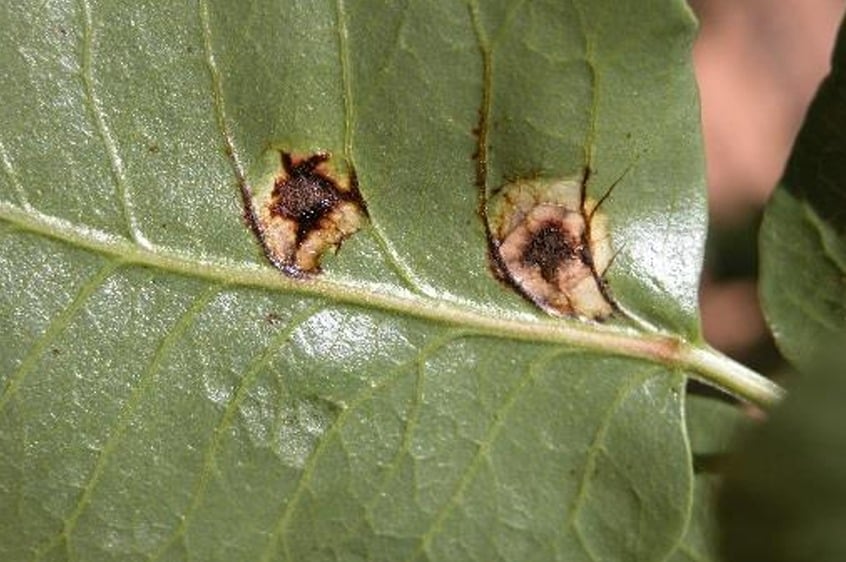
Related content:
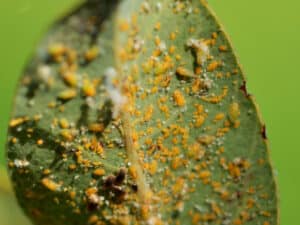
Pistachio psylla: A threatening pest in crops in Castilla-La Mancha and Extremadura
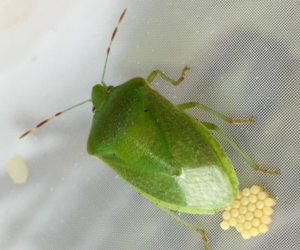
Pests of the pistachio tree: The green stink bug (Nezara viridula L.)
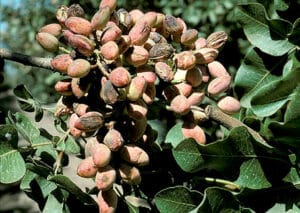
Alternaria in the pistachio tree: how to prevent and treat this common disease.
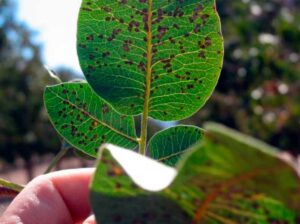
Septoriasis in the pistachio tree: Causes, symptoms and control measures.
Seeker:
Find out now:
You may also like:
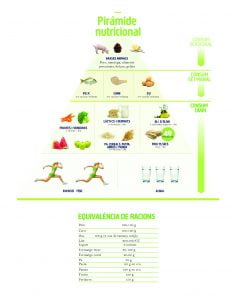
Pistachios star in the new pyramid of the Mediterranean Diet, one of the healthiest in the world.
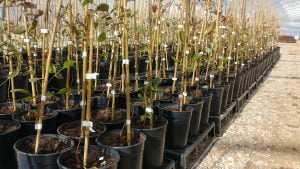

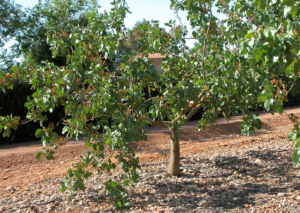
Pruning the pistachio tree: a key aspect in the cultivation and growth of the plant.
Entries by category:
Share this post with one click:
